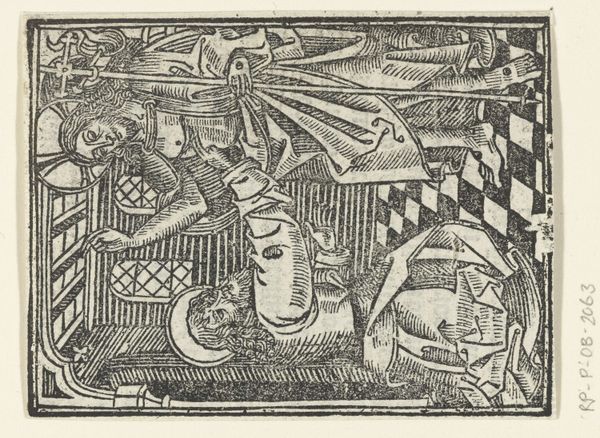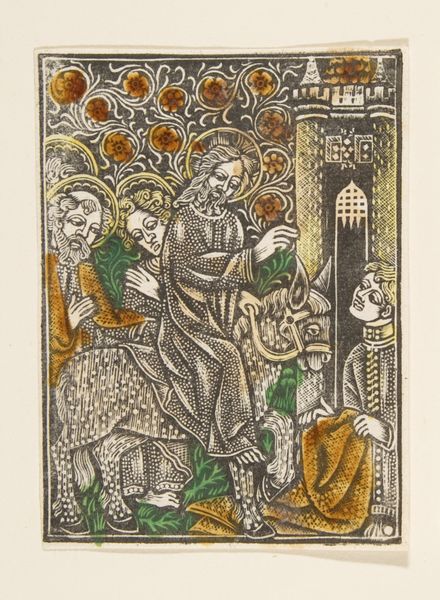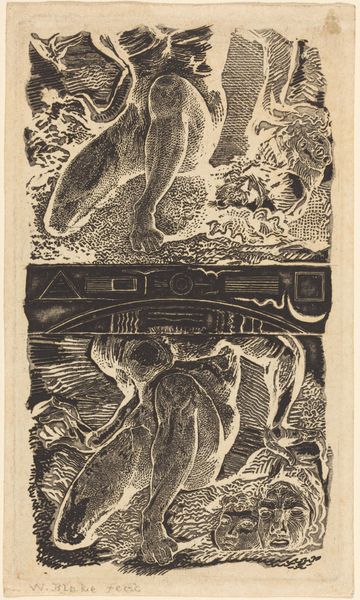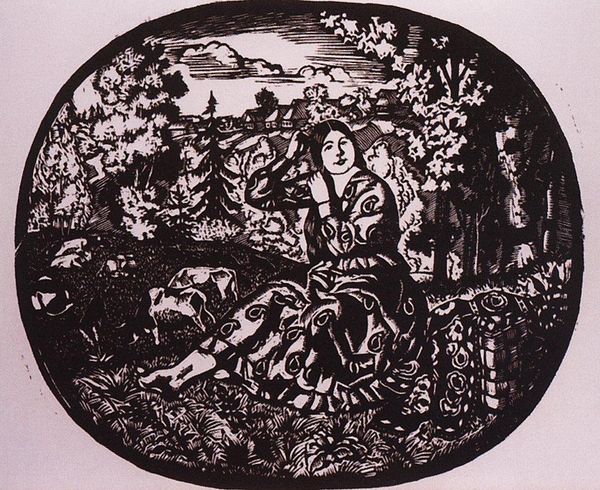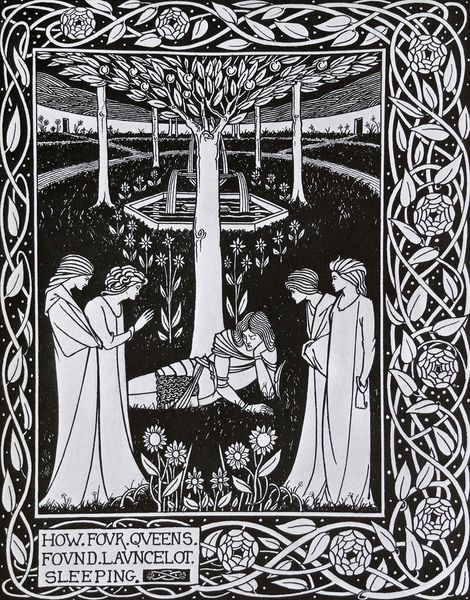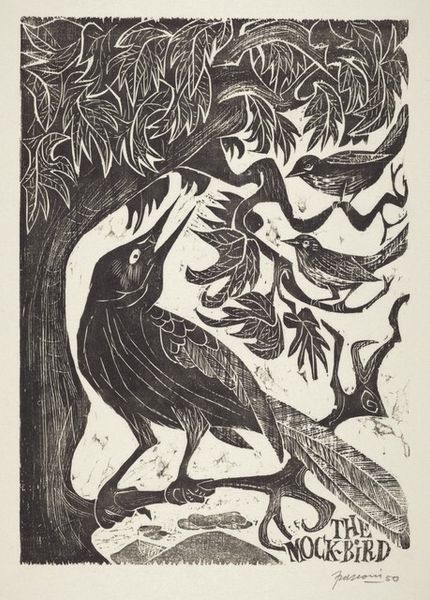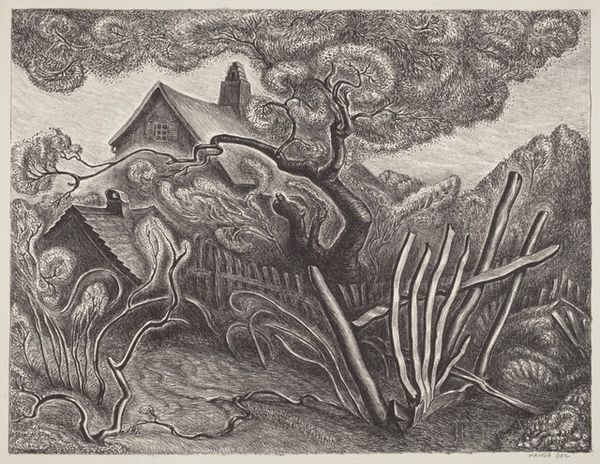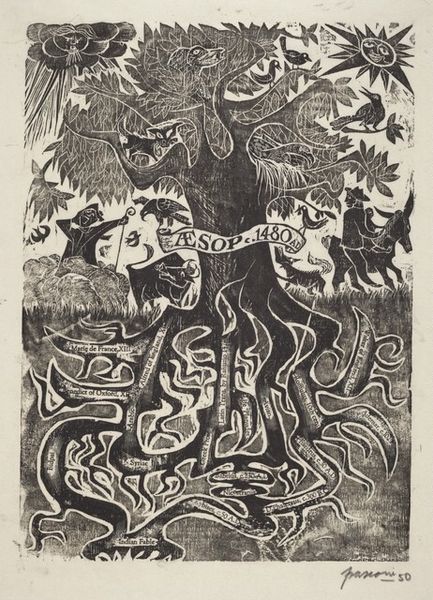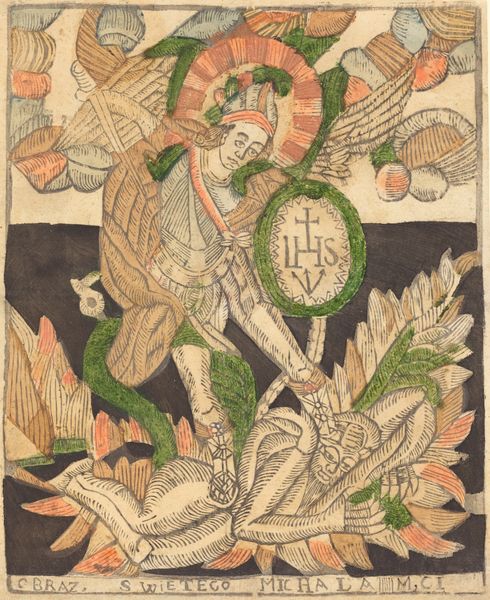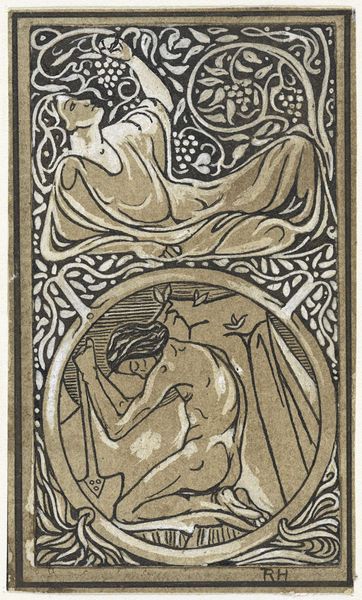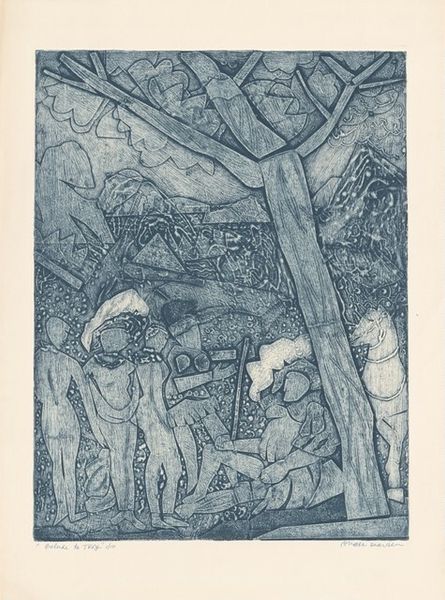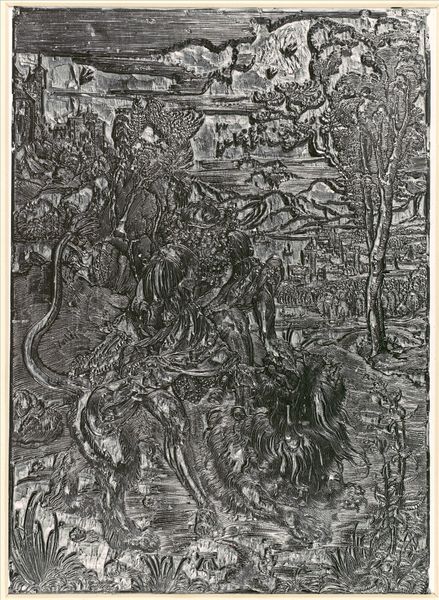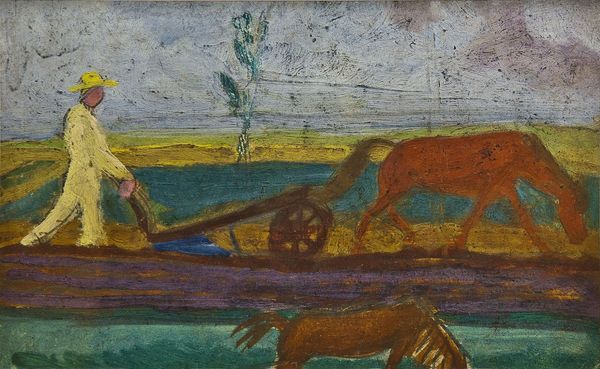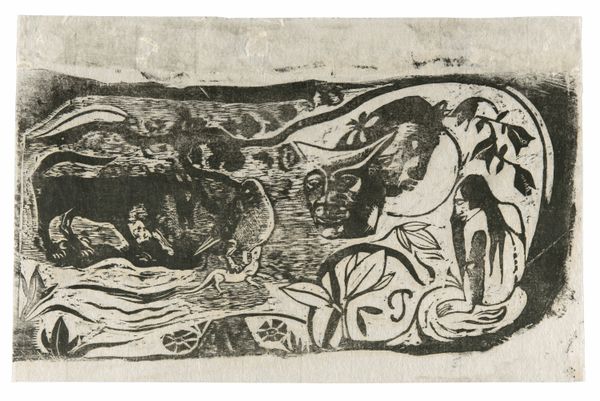
drawing, coloured-pencil, paper, watercolor, ink
#
drawing
#
coloured-pencil
#
medieval
#
allegory
#
narrative-art
#
ink painting
#
landscape
#
figuration
#
paper
#
watercolor
#
ink
#
coloured pencil
#
romanticism
#
watercolour illustration
Copyright: Public Domain: Artvee
Editor: So, here we have *The Tomb of Tristram and Iseult,* a drawing by Edward Burne-Jones rendered in ink and colored pencil. It has a romantic, almost melancholy mood, heightened by the monochromatic palette. What symbolic meanings do you see embedded in the work? Curator: The choice of ink and colored pencil evokes a sense of looking back, recalling illuminated manuscripts and medieval tapestries where such narratives were enshrined. Note how Burne-Jones uses this technique to not just depict the scene, but to also conjure a certain historical aura. See how the dogs are placed in the foreground? What might they represent? Editor: Faithfulness, maybe? They seem loyal and protective. Curator: Exactly. And consider the harp above the tomb and the figures adorning its base. These are not mere decorations; they're potent symbols that condense the narrative of Tristram and Iseult’s tragic love. The harp represents the music and poetry associated with courtly love. The images on the tomb—do they appear continuous? Editor: Not really, they seem like fragmented moments from a play. Curator: Precisely. They suggest that love, even in death, is never a complete or coherent story, but a series of intense, memorable fragments that endure in our collective memory. Even the single color calls on a visual connection to illuminated manuscripts of the medieval time, telling us a lot about their long lasting influence and a fascination with this bygone era of manuscripts as story-telling. Editor: That’s a fascinating take! I hadn't considered the fragmented aspect and how it contributes to the overall sense of timeless tragedy. Thanks! Curator: The piece serves as a reminder that certain stories and their visual representation are retold to express the continuous dialogue between our present experiences and cultural past.
Comments
No comments
Be the first to comment and join the conversation on the ultimate creative platform.
